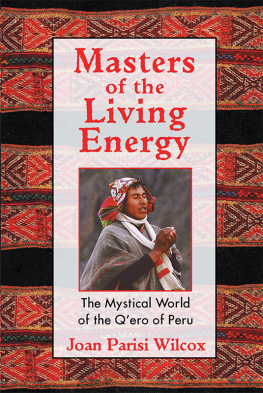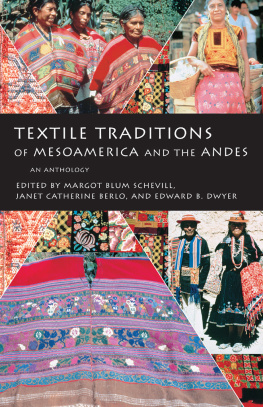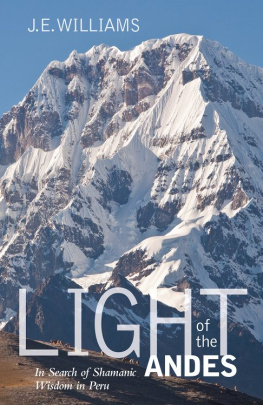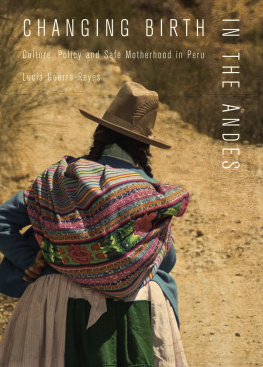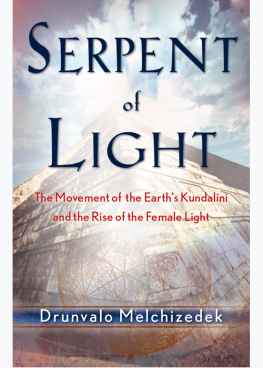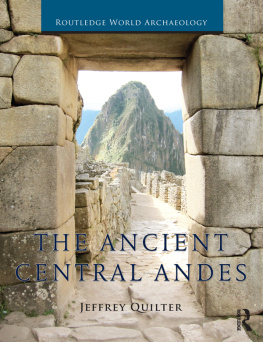Masters
of the
Living
Energy

Joan Parisi Wilcox has given us a mature and sensitive portrait of a mystical system as seen through the eyes of its practitioners, the Qero. Written with heart and respect, this book is a gateway for serious seekers to discover the world of living energy and to learn how to live in harmony with nature and each other.
DEEPAK CHOPRA,
author of The Seven Spiritual Laws of Success
You will bring the word of the Qero to the world.
DON MARIANO APASA MARCHAQA, Qero Master,
speaking to the author
Masters
of the
Living Energy
The Mystical World of the Qero of Peru
Joan Parisi Wilcox

Inner Traditions
Rochester, Vermont
Acknowledgments

N o book is ever the authors alone. Many people provide inspiration, ideas, feedback, and support. I have been blessed to have had the assistance of many extraordinary people during this project.
My deepest appreciation and love to my family, each of whom has nurtured me in ways untold, and to my friends and fellow adventurers who were indirectly a part of the making of this book. I especially would like to acknowledge my mother, who is my best friend, my earliest and greatest inspiration, and an exquisite example of strength and unconditional love.
My heartfelt thanks to Cristobl Cornejo, Jesse Telles, and Anamaria Szendroi, each of whom at various times served as Spanish translators. To anthropologist Ricardo Valderrama Fernndez, I offer my sincerest gratitude for providing the Quechua translations during the Urubamba interviews.
There is no way to gauge the importance of Dr. Juan Nez del Prados contribution to this book. Very simply, it would not have been written without him. From my first meeting with him, which took place in the dreamtime, I knew Juan would be more than a friend and teacher to me; he would be a mentor. He has proven that to be true in more ways than he knows. He has also demonstrated that a sharp intelligence and a keen skepticism can happily coexist with humility, integrity, and a deep spirituality.
It also is impossible to adequately acknowledge my husband, John, for his unconditional support and love. It is largely your spirit, John, that has so magnificently scripted our story together, through all its challenges and triumphs.
I thank the Qero, the keepers of the ancient knowledge, and Fredy Puma Quispe Singona, who have been more than teachers to me; they have become friends. Anything that touches your heart and stirs your spirit in this book comes first from them, a gift to you from your brothers and sisters in the Andes.
Writing the first edition of this book was a complicated project that spanned geographic boundaries, cultures, and languages. The words, knowledge, and wisdom of the Andean shamans and their apprentices that I have been able to record for you here are the result of many people opening their hearts and their spirits to you, directing the finest energies from the hanaq pacha (upper world) to the kay pacha (middle world) for your understanding and use. Any errors that occur are, I suspect, stray signals from the ukhu pacha (lower world)!
Contents

Authors Note to the Revised Edition

W hen I learned that my publisher would be bringing out a revised, paperback edition of the original Keepers of the Ancient Knowledge: The Mystical World of the Qero Indians of Peru, I was delighted. Updating the book gave me the opportunity to plug what I perceived as a large hole in that original edition by providing an in-depth discussion of the mesa, which is similar to a Native North American medicine bundle, and the mesas many uses, especially in healing. My primary informant, to use the anthropological term, for this additional information was a young shaman of impressive knowledge, Fredy Puma Quispe Singona. My husband and I first met Puma at a conference on Andean shamanism and healing in Washington, D.C., and he later came to stay at our home in North Carolina. During this extended visit, he taught us more about the mesa than we had learned in our previous ten years working in the Andean spiritual tradition. I have presented Pumas teaching about the mesa and healing in a new . Puma speaks Spanish, Quechua, and English, and as I have done with the words of the Qero, I have reproduced Pumas words as closely as possible to the way he spoke them, editing only for grammar, syntax, and context.
In addition to adding this new section, I have substantially revised many chapters in .
Throughout the book, you may notice that for certain Quechua words, my spelling choices vary from those that might be more familiar to you or other Westerners studying the tradition. Quechua, the administrative language of the Inkas and the indigenous language of Peru, historically was not a written language, but it has been transcribed by historians and scholars. Thus, there are various official Quechua dictionaries, and for this book I primarily relied upon the 1995 first edition of Diccionario Quechua, published in Cuzco by the Academia Mayor de la Lengua Quechua, and the advice of Ricardo Valderrama Fernndez and Juan Nez del Prado. As a consequence you will find, for example, that I spell Inka with a k rather than the Castilian c and chose the more traditional spelling of kawsay over the modernized and Westernized spelling, kausay. Spelling variations are included in the glossary, where you will also find definitions and approximate pronunciations. In addition, I have not used the proper plurals for Quechua words. In Quechua the plural is indicated by the suffix -kuna. A couple of examples: the generic term for an Andean shaman is paqo and a mountain spirit is called an apu. The plural of these terms would be, respectively, paqokuna and apukuna. For the sake of clarity with readers, however, I have chosen to follow the convention of many other English-language authors and write the plural of Quechua words with an s suffix: paqos and apus.
I am saddened to report that since the original publication of this book, three of the Qero who contributed to it have passed away. Don Juan Pauqar Espinosa died of a heart ailment that, I am told, might have been successfully treated with antibiotics if he had been able to reach a hospital. The villages of Qero are quite isolated, so even if don Juan could have afforded conventional medical treatment, it would have been difficult for him to get to it. The two Pauqar Flores brothers, Julian and Juan, died within a short time of each other. I was told that Julian suffered from stomach pains and died soon thereafter. Juan, in deep mourning for his brother, is claimed to have taken to his bed, also complaining of stomach pains, and quietly passed away. This story may be apocryphal, but it rings true to me, for the brothers were bonded not only at the familial level but at the energetic one as well.
Contributors: The
Next page
